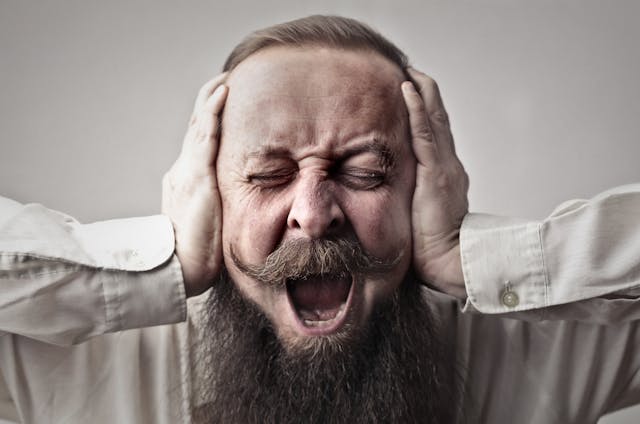
Why do your ears hurt on a plane? Your ears hurt on a plane because the pressure in the cabin is different to the pressure in the fluid in your inner ear, which causes pain.
If you have ever ridden on an airplane, you have probably felt your ears go funny. You have probably also been seated near babies that won’t stop crying. If you have ever felt annoyed at these babies and wondered why parents take babies on planes in the first place, next time try to notice when the babies cry. The majority of babies will cry during take off and landing and it is the pain in their ears that is making them cry. We know how to equalize our ears. Babies don’t. You may have also had the opportunity to go scuba diving, or at least swum down to the bottom of a deep swimming pool and you will know that you have to equalize your ears every few meters or the pain will become too much to bear. What is happening?
Your ear is made up of several parts. You have the outer part, the bit that you can see, which is responsible for channeling sounds into the inner part. Then you have the ear canal, which leads to the eardrum, a piece of skin stretched across the ear canal. On the other side of the eardrum are three tiny bones and on the other side of those bones is the cochlea, which is a fluid filled, snail-shell shaped tube that is filled with fluid and microscopic hairs. When a sound wave comes into the ear canal, it makes the eardrum vibrate and the three tiny bones pass those vibrations on to the cochlea. The vibrations make the fluid in the cochlea move, which makes the microscopic hairs moves, and that is translated into an electrical signal that our brain can interpret as sound. When you are on an airplane that is taking off, your ears hurt because of the air-filled space that the three bones are sitting in.
The part of the ear we are talking about is called the middle ear. It goes from the eardrum to the edge of the cochlea. The three tiny bones sit in an air-filled cavity called the tympanic cavity. The air in the tympanic cavity comes via a very thin tube called the eustachian tube, which is connected to the back of the throat. The eustachian tube is generally in a collapsed state, keeping the air inside the tympanic cavity. It opens up when we swallow, open our jaws wide, or force it open with positive pressure. When it is open, the air in the tympanic cavity can flow in or out.
Our ears hurt on planes or when we are scuba diving because of this eustachian tube. The ear canal on the other side of the eardrum is open to the air and air can flow in and out of it. The air in the tympanic cavity is not open. As your plane takes off, it goes up rapidly and the air pressure in the cabin drops. That means the air pressure in your ear canal also drops because it is open to the air. However, the air pressure in your tympanic cavity stays the same as when you were on the ground because there is no way for the air to get in or out. The pressure of the air inside your ear is greater than the pressure outside and it starts to push your eardrum out because air with higher pressure takes up more space. It presses on other parts of your inner ear as well, which can be painful. It also means your eardrum cannot vibrate properly, so sounds appear very muffled. If you are going in the other direction, the air in your middle ear might have a lower pressure than the air outside and that will pull the eardrum inwards, also causing pain.
If our ears are getting uncomfortable, like this, most of us know how to fix it. You can try to yawn or to swallow. Airlines often give out candies so that people have something to swallow. When you swallow or open your mouth wide to yawn, it opens the eustachian tube, letting air in or out of the tympanic cavity to equalize the pressure. As soon as the pressure is equalized, the pain goes away. If that doesn’t work, you can forcibly equalize them by holding your nose, closing your mouth, and blowing. When you do this, you force air out of your lungs into your mouth and throat, but it has nowhere to go because your nose and mouth are shut. That builds the pressure up, and the air looks for any route to escape. It forces its way up the eustachian tube, and equalizes the pressure in your tympanic cavity. So, next time you hear a baby crying on a plane, remember that it cannot equalize its ears the way you can, and its parents feel awful. And this is what I learned today.
Tret these:
Sources
https://en.wikipedia.org/wiki/Ear_clearing
https://my.clevelandclinic.org/health/diseases/17929-airplane-ear
https://en.wikipedia.org/wiki/Eustachian_tube
https://www.mayoclinic.org/diseases-conditions/airplane-ear/symptoms-causes/syc-20351701
Photo by Andrea Piacquadio: https://www.pexels.com/photo/close-up-photo-of-screaming-man-with-a-full-beard-covering-his-ears-and-closing-his-eyes-3764535/
